The men behind Barack Obama part 1

Masonic handshake
The Senate has just confirmed Eric Holder, Esq. as the Attorney General of the USA. His choice was not without controversy. However , due to his deep links and longstanding service to the satanic bloodlines of the illuminati and the dark hierarchies they serve...there was never any doubt about his selection. BACKGROUND of CONTROVERSY: 1. Eric Holder took part in the pardon of Arch-Mossad Agent Marc Rich. The biggest tax cheat in USA pardoned...when how many have been jailed and ruined for far less? Not only that but Mr. Rich made the money trading oil to the mullahs of Iran holding US hostages. www.washingtonpost.com/wp-dyn/content/article/2008/12/01/AR2008120102403.html . 2. Eric Holder was a partner in the law firm of Covington and Burling. Some believe that the law firm represents the illuminati elites. scroll down 50%. "William Putnam Bundy..." www.bibliotecapleyades.net/bloodlines/bundy.htm . 3. Covington Burling has a 333 address office. This number is believed to be part of the 333 555 Network. Silicon Valley - www.cov.com/Offices . For more information on the Network that appears to use those numbers as an identifier , code or corporate "mark of the beast" see: www.scoreboard-canada.com/babylon-justicerobertstoObama.htm andwww.bluebabyexpo.blog.com/1436460/ . 4. Oddly, enough, Mark Rich is connected to the 333 555 network.www.bluebabyexpo.blog.com/1618757/ . CONCLUSION: Where will AG Eric Holder's main office be now that he is the leader of the Federal prosecutors of the USA? At a 555 address. It is 555 4th Street , Washington , D.C.. There is also another office with the 555 address , in New Mexico.www.usdoj.gov/usao/nm/index.html . Eric Holder defended lawsuits against the families of victims of terrorists. (For Chiquita Banana). The firm represented Halliburton. Both Chiquita Banana and Halliburton are 333 and 555 krewed. See: www.en.wikipedia.org/wiki/Covington_&_Burling . Chiquita 333 at www.scoreboard-canada.com/babylon-chiquita.htm and Halliburton 555 atwww.alacrastore.com/storecontent/dnb2/026168963 . Dear Reader....Don't these numbers really add up to........ 666 ? [allegorically, yes, but the actual is yet to come, however the relation is readily apparent in the evil that Holder is part of that aligns itself with the Beast]
See: OBAMA
Barack Hussein Obama (Chicago homosexual bath house frequenter Barry Soetoro and homosexual associate of fellow homosexual Rahm Emmanuel) is a 32nd Degree Prince Hall Freemason.
George W. Bush was a member of Masonic Skull and Bones at Yale.
Bill Clinton was a member of Masonic DeMolay in his youth.
Ronald Reagan was made an honorary Mason.
God and His Messiah Jesus Christ our Lord - our right and duty to witness to Him: I Banchieri di Dio
God and His Messiah Jesus Christ our Lord - our right and duty to witness to Him: I Banchieri di Dio
from FreemasonryWatch Website Curious Ommissions 'Inside the Brotherhood' - Martin Short 'St. Peter's Squared', Chapter 8 Excerpts Harper Collins, 1989 If they were not doing evil they would not have so great a hatred of the light. Ever since 1738 when Clement XII issued his bull In Eminenti against the 'depraved and perverted' societies of Freemasons, the Roman Catholic Church has been condemning Freemasonry as if it were the child of the devil. Ironically, it was only in recent years, as Protestant churches were at last plucking up courage to round on the brotherhood, that the Vatican softened its opposition and seemed almost to welcome its centuries-old enemy beneath the canopy of St Peter's itself. In eminenti - the first of more than twenty bulls against Freemasonry - was issued partly on doctrinal grounds but also because, in the 1730's, the Papacy felt its temporal power was being subverted by a lodge in Florence. The lodge, set up by Englishmen, was being used by English agents as a cell for intrigue and espionage. As I explain in Chapter 33, the agents target was the Stuart Pretender, James, who was holding court in the Holy City, but the lodge also contained Italian freethinkers who mocked the Papacy. On both these grounds Clement railed against societies called 'Liberi Muratori' or 'Freemasons' for the 'great mischiefs' they did to the 'temporal tranquility' of the state:
The Pope commended that no members of 'the faithful in Christ', whatever their status, laymen or clergy, should join Masonic societies, or give Masons shelter, help them meet, 'afford them counsel, help or favor', assist them to recruit, or 'in any manner aid and promote them'. Those who did would suffer the penalty of excommunication,
Enforcing the new law fell to the Holy Inquisition which promptly jailed an Italian member of the Florence lodge. The lodge closed but some of its members still conspired against Rome. For the next 100 years Freemasonry grew throughout Italy as a cover for nationalist revolutionary activity. According to one Masonic writer, from the middle of the nineteenth century 'the salient point of Italian politics was war against Catholicism directly led by the lodges'. By 1848 Pius IX and the Papal States were overwhelmed by the movement for Italian unification. The papal prime minister was assassinated, an act which the revolutions leader, [and Mafia founder - FW] the Freemason Giuseppe Mazzini, deemed 'necessary and just'. Rome rebelled, Pius fled, and Mazzini set up a Roman Republic. It did not last. In 1850 the French put Pius back on the Roman throne, but the secret societies had signaled the end of his territorial power. Twenty years later Italian unity was achieved, largely through the efforts of three Masons; the revolutionary Mazzini, the soldier Garibaldi and the statesman Cavour. By 1870 these men had destroyed the Pope's earthly dominion. Rome was made the capital of an independent secular nation state and the Papacy was reduced to 109 acres around St. Peter's. In his tortured thirty-two year reign Pius IX issued six bulls attacking Masonry but the definitive condemnation came in 1884 with Humanum Genus, in which Leo XIII lamented that the pontiff was falsely deprived of temporal power, the stronghold of his rights and of his freedom. He was next reduced to an iniquitous condition, unbearable for its numberless burdens until it has come to this, that the sectarians may openly say what they had already in secret devised for a long time, namely, that the very spiritual power of the Pope ought to be taken away and the divine institution of the Roman Pontificate ought to disappear from the world. Leo endorsed the view that the Freemasons' 'real supreme aim' is,
The Masons deceived the people too into believing that 'the Church is the cause of the iniquitous servitude and misery in which they are suffering' but,
The turning point was the Papacy of John XXIII. THE USURPATION OF GOD BY MAN OF THE APOSTATE ROBBER COUNCIL OF VATICAN IIIn 1962 his second Vatican Council promoted a new climate of religious tolerance and raised hopes of a coming together of all churches and faiths. It called for a dialogue with all 'men of goodwill' who showed a readiness to talk with the Church. Leading Masons felt this must include them because their order was built on a similar concept of 'gather together, beyond the limits of the various religions and world views, men of goodwill on the basis of humanistic values comprehensible and acceptable to everyone. It was also told that Masonry's moral values encourage men to embrace their own religions even more strongly, so that Catholics who are Masons become even better Catholics. In the decade after Vatican II, Catholic leaders in several countries were solicited by Freemasons. In 1968 a prominent English Mason named Harry Carr persuaded the Cardinal Archbishop of Westminster to propose a softer line on Freemasonry to the Vatican. Cardinal Heenan was sympathetic because of the sad tale of one of his parishioners. In his autobiography he told of his visits to a Yeoman of the Guard (a Beefeater at the Tower of London) who was 'over seventy with a well-trimmed white beard'. The man always attended Sunday Mass and 'prayed with great recollection', but never took Communion.
Heenan felt it was 'probably only a matter of time' before the general ban on Masonry would be lifted, but not even he dared ask the Vatican to allow the Yeoman to take Communion while he was still a Mason. Instead the Cardinal urged the Beefeater to quit the Craft, but he never did because he,
As it happens, the Yeoman's 'impression' was almost certainly correct for the Craft is strong in the army, the Territorial and in many quasi-military organizations. At that time it may have held sway among Beefeaters. Ignoring such worldly obstacles, Heenan embraced Carr's view that 'regular' Masons had never plotted against the Church and accepted the need to draw a 'sharp line' between English-style Freemasonry and the 'atheistic or anti-Christian Grand Orient type'. In his own book Carr says he urged Heenan to urge Rome that it could use the English model to distinguish between good and bad Freemasonry. He added:
The Cardinal then took up the cause of 'regular' Freemasonry with Pope Paul VI. By 1971 he was able to report some progress... Similar Church-Mason canoodling was going on in France, where Freemasonry has an even stronger anti-clerical tradition than in Italy. The French Revolution was largely inspired by Masonic notions and by masons such as Diderot, Voltaire and Lafayette. French history thereafter is littered with Masonic onslaughts on Catholics and Catholicism... In March 1985 the Vatican newspaper, L' Osservatore Romano, published an article showing that all those cozy chats between folk like Harry Carr and Cardinal Heenan had missed the central issue. What mattered was not which lot of Masons plotted against the Church but whether Freemasonry's 'philosophical ideas and moral conceptions' could ever be reconciled with the fundamentals of Christian faith. Even a century before, when the Papacy had just been territorially destroyed by Masons, its opposition had been primarily doctrinal. In Humanum Genus Leo XIII condemned the brotherhood's 'rationistic naturalism'. Elsewhere, he said:
L'Osservatore Romano expressed in its Latin way most of the objections later raised by Britain's Protestant Churches. Above all it must be remembered that the community of 'Freemasons' and its moral obligations are presented as a progressive system of symbols of an extremely binding nature. The rigid rule of secrecy which prevails there further strengthens the weight of the interaction of signs and ideas. For the members, this climate of secrecy entails above all the risk of becoming an instrument of strategies unknown to them. Freemasonry's 'relativism', its failure to differentiate between right and wrong paths to God, reducing all religions to facets of 'a broader and elusive truth', is unacceptable. A Catholic cannot live his relation withGod in a two-fold mode... dividing it into a supraconfessional humanitarian form and an interior Christian form. He cannot cultivate relations of two types of God, no express his relation with the Creator through symbolic forms of two types... On the one hand, a Catholic Christian cannot at the same time share in the full communion of Christian brotherhood and, on the other, look upon his Christian brother, from the Masonic perspective, as an 'outsider'. After fifteen years of flirting with Freemasonry, the Church had come back to where it had stood before Vatican II, and before that for more than 200 years. Yet from 1974 an unknown number of Catholics had joined the Craft. The Vatican has still not made clear where they now stand. Should they follow a 1911 decree which instructed Catholic Masons to move into 'passive membership' abstaining from all participation and 'communion' with Freemasonry, or quit altogether if they can so do without causing themselves or their family 'serious harm'? Without express guidance, Catholics already active in Freemasonry will probably stay active. They may find 'grave sin' more fun than Holy Communion. The dalliance is over, but crucial questions still need to be answered. Why did the kissing stop in 1981? And how had it ever begun? Was it just Vatican II which caused the Church to drop its centuries-old hostility or was some other force at work? A 'topside' interpretation might claim the kissing had to stop as soon as Germany's bishops produced a devastating statement on six years of discussion with their Masonic countrymen. In 1980 they reported:
For all the Craft's humanitarian and charitable aspects, and its stand against 'materialistic ideology', it still denies the 'objective validity of revealed truth'. Being a Mason 'is to question the fundamental principles of Christian life'. The bishops slated Freemasonry for its many 'isms': indifferentism, relativism, subjectivism, deism. To the Masons 'all religions are competitive attempts to express the ultimate unattainable truth about God '. This 'undermines the faith of a Catholic' whose Church - despite Vatican II - still lays claim to absolute truth. The bishops' statement was published ten months before the Vatican made its 1981 declaration that Catholic Masons still faced excommunication, but everything they said was as plain as a Swiss Guard's pikestaff. Anyone with the slightest awareness of Catholic dogma and Masonic 'tolerance' would already have known the two could never be reconciled without intellectual dishonesty. It is unlikely, therefore, that the volte-face had nothing to do with the German bishops but everything to do with the scandal of Propaganda Massonica Due, the 'regular' Masonic Lodge otherwise known as P2. I tell the inside Masonic story of P2 in Chapter 33. Here I point out that this plot to subvert the entire Italian nation first penetrated St Peter's in the 1960s, soon after Vatican II. It was only on the eve of the P2 scandal that the Sacred Congregation published its 1981 'no-change' statement. 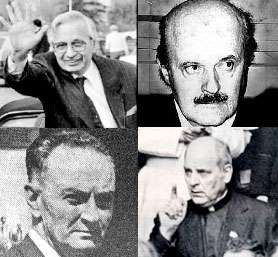 P2's shocking 'state within a state' membership lists were discovered one month later, but magistrates had already been investigating P2's Grand Master Lucio Gelli for two years and knew how deeply he and his Masonic cronies had subverted the Vatican in the eighteen years since Paul VI had become Pope. Now the Vatican suddenly realized Freemasonry was still a perfect vehicle for conspiracies against Church and State. 'Times change,' the English bishops had said in 1974. They failed to say that Freemasonry remains the same. The P2 scandal was 1738 and 1848 all over again. 'Men of goodwill' in Britain, France and Italy would bluster that P2 had nothing to do with 'regular' Freemasonry, but this was a lie and those who uttered it were either fools or knaves. P2 was a recognized part of the 'regular' Grand Orient of Italy - itself recognized by the Grand Lodge of England in 1972 - and three successive Italian Grand Masters were up to their necks in the conspiracy. Yes Virginia, Freemasonry Lies 'Inside the Brotherhood' - Martin Short 'Spooks in Aprons', Chapter 33 Excerpts Harper Collins, 1989 Despite the combined claims of Bentine, Knight and Chinaman, I sense that this 'KGB infiltration' view of British Freemasonry is a distraction: not invalid, but far less significant than the greater truth that stolid Whitehall bureaucrats have joined Freemasonry in far greater numbers than any spies. Such mandarins may be mediocre, even incompetent, but they are the people who keep the ship of state afloat. If a few of them corruptly feather their nests by feeding juicy contracts to Masonic friends in private industry, so be it. These men may not be the backbone of the civil service, but they constitute several ribs. Knight went more dangerously off-course with a second KGB theory: that Italy's P2 Masonic Lodge conspiracy was a KGB plot. He was fed this idea by someone whom he described as 'an impeccable source within British Intelligence', but his strongest evidence appears to have been the perverse fact that of all Italy's leading political parties, 'only the Communist Party had no links with P2' and so could exploit the P2 scandal with impunity.
Even when The Brotherhood first appeared, this seemed an unlikely story. Five years later it is clear that Knight's 'impeccable source' had filled him with disinformation. To understand this government spook's motives we have to explore the P2 story from several angles, but first a brief summary of P2. In March 1981 two Milan magistrates were investigating the fake kidnapping in 1979 of a swindling Sicilian-born international banker, Michele Sindona. They were also probing his role as financial advisor to the Vatican and the Mafia. They discovered that, while he was hiding in Palermo, one of his 'minders' had traveled 600 miles north to Arezzo to visit a textile manufacturer, Licio Gelli. They promptly ordered a search of Gelli's premises. On 17 March finance policemen discovered 962 Italian names on lists kept in his office safe and a suitcase. The names belonged to members of a Masonic Lodge named Propaganda Massonica, also known as P2. Gelli was its Venerable Master. What astonished the investigators was that the names on the lists amounted to a state within a state. They included forty-three MPs (among them three cabinet ministers), forty-three generals and eight admirals (including the current heads of all the armed forces), security service bosses, hundreds of public servants and diplomats, the police chiefs of Italy's four biggest cities, industrialists and financiers, television stars and twenty-four journalists, including the editor and publisher of Corriere della Sera. Sindona was a member. So was another controversial banker, Roberto Calvi, who would later be found hanging under London's Blackfriars Bridge. But who was Gelli? 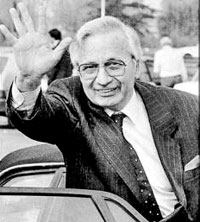 In succeeding months the magistrates discovered that this seeming small-town industrialist was a fascist war criminal who had opportunistically betrayed his colleagues as soon as he realized Germany was going to lose the war. A few years later his past caught up with him, so he fled to Argentina and made valuable political friends such as General Peron. In the mid-1960s he returned to Italy and was appointed Argentina's honorary consul. He soon had connections everywhere. He had no problems doing textile business in Eastern Europe, but he also popped up in Rome's right-wing circles. He even had friends in America's Republican Party, through whom he was invited to President Reagan's 1981 inauguration. He was masterly at collecting influential people. He manipulated them to aggrandize himself.
The KGB theory was always the least likely. There was little evidence to support it, whereas there was overwhelming proof of Gelli's continuous involvement with fascism for more than forty years. Significantly, the 'P2-KGB plot' fantasy resembles a parallel propaganda myth which fooled many other journalists at the time: that the 1981 assassination attempt on Pope John Paul II was a Bulgarian plot.
If Western Intelligence experts really believed that, the West was (and is) in deep trouble. It has now been shown that this theory was concocted by two Americans: a former CIA operative named Paul Henze and a right-wing journalist named Michael Ledeen. Ledeen had previously known a rising Italian businessman, Francesco Pazienza, who had links with SISMI: Italian Military Intelligence. However, Pazienza rejects the 'Bulgarian plot' theory and claims he is himself the victim of black propaganda, falsely branded as a P2 member and as Gelli's nominated successor. He is a Mason, but says he never met Gelli. In 1988 he was sentenced to a ten years in prison over the 1980 bombing of Bologna railway station, but he claims he will be cleared on appeal. At a future date I hope to portray the political, military, and commercial rackets which P2 members have continued to perpetrate years after P2 was officially dissolved. Here I show how the reactionary forces, in Italy and America, which created P2 are tied in with British Intelligence and British Freemasonry. Many of my comments are based on evidence gathered by an Italian Parliamentary Inquiry into P2. Its 1984 report was never published in English. Indeed, it has rarely been mentioned in the British or American media, even though its contents have world wide significance. The report also helps explain why - and on what basis - British Intelligence misled Stephen Knight into believing P2 was a KGB plot. To understand P2, however, we must have some idea of the history of Freemasonry in Italy. 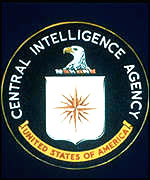 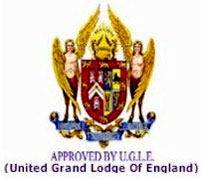 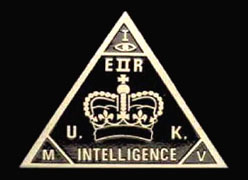 The brotherhood has had a controversial history ever since it reached Italy in the early 1730's (see Chapter 8), but its political ascendancy was ended in 1925 when it was outlawed by the fascist dictator Benito Mussolini. Twenty years later it was legalized again, but only after the US Office of Strategic Services (the forerunner of the CIA) had pressured Italy's weak and impoverished government. The OSS planned to use Freemasonry just as it used the Mafia: to prop up a sickly democracy threatened by Soviet-inspired destabilization and the prospect of a communist election victory. The OSS/CIA backed Italy's strongest Masonic faction, the Grand Orient, which today has some 15,000 members. From 1961 until 1970 its Grand Master was Giordano Gamberini who (whether for the CIA or his own ends) sought to influence Italian elections by canvassing for candidates who were Freemasons and giving them money. At the time he was desperate to win recognition from the United Grand Lodge of England, which most 'regular' Masons in the world regard as the sole source of legitimacy. If England could be persuaded to recognize the Grand Orient, all other Grand Lodges would follow suit. England had always refused, largely because of Italian Freemasonry's historic involvement in politics. This offends the Basic Principles on which England's Grand Lodge decides whether to recognize any other. Principal 7 states:
By meddling in politics Gamberini was breaching this principal, so the Grand Lodge of England should have shunned him like the plague. Instead it acted as if in totally favor - or blissful ignorance - of his political game. In the 1960s Grand Lodge was more distracted by the fact that the Grand Orient (also known as 'Palazzo Giustiani') was one of two Italian Grand Lodges clamoring for recognition. There was also the Palazzo del Gesu, with some 5,000 members. James Stubbs, then England's Grand Secretary, described the dilemma in his 1985 biography, Freemasonry in my Life:
The man who had master-minded the unification of the Grand Orient and Palazzo del Gesu, paving the way for recognition by England, was none other than the subsequently notorious Licio Gelli. He had entered Freemasonry only in 1965, yet he was instantly recommended to Grand Master Gamberini as someone 'able to make a great contribution to the institution in terms of recruiting qualified people'; in other words, to draw into Masonry men dedicated to right-wing goals. If we remember the OSS's fierce anti-communist intent in resurrecting Freemasonry after World War II, and Gamerini's 1960s electioneering, it is clear that the political meddling of modern Italian Freemasonry did not start with Licio Gelli. He merely increased its effectiveness. In 1970 a Florence doctor named Lino Salvini became Grand Master. This freed Gamberini to act as the Grand Orient's roving ambassador in the search for international recognition. At the same time he sought to develop Propaganda Massonica Lodge (P2) as a nexus for the Italian Right to seize control of Italian society, if ever the need arose. The lodge had been founded in 1877 to meet the needs of provincial Masons living temporarily in Rome and thus unable to attend their home lodges. It soon evolved into a 'reserved' or secret lodge whose members were known only to the Grand Secretary, allegedly to protect them from Papal wrath. In the mid-1960s P2 had only fourteen members, but in 1970 Salvini asked Gelli to 'restructure' the lodge. Suddenly numbers soared. Within a decade it had 400 members, a few years later almost 1,000. Gelli has received all the credit and blame for this achievement, but Gamberini supervised many of the initiation ceremonies which Gelli performed in P2's Excelsior Hotel headquarters. Grand Master Salvini was just as involved. In December 1971 he told P2 members that henceforth they could pursue their 'profane' (worldly) aims under the cover of their concealed order: If until known it has not been possible to meet at our places of work, with this restructuring we shall have the possibility and pleasure of more frequent meetings, to discuss not only the various problems of a social and economic order which interest our brothers, but also those regarding the whole of society. The minutes of one P2 meeting in the early 1970s reveal what kind of society appealed to Gelli, Salvini and Gamberini. Gelli wrote that members discussed:
In a note to absent members Gelli added:
In other words, P2 was a secret cell for the preparation of a right-wing coup like those which engulfed Greece in 1967 and Chile in 1973 (in Chile's case, to overthrow President Allende, who was a communist Freemason of an 'irregular' Masonic order). Gelli hosted frequent P2 meetings where the politics of destabilization and subversion were discussed by police chiefs, army generals, security service bosses and appeal court judges. He knew this was not orthodox Freemasonry:
During these years Grand Master Salvini knew exactly what Gelli was doing, indeed he had told him to do it. The same year that P2 'banished philosophy' with Salvini's blessing, Salvini himself was blessed by the Grand Lodge of England. In September 1972 Great Queen Street declared it was 'convinced that the time is ripe and conditions are favorable' for recognizing the Grand Orient. The 1970s were some of the blackest years in the history of modern Italy. The state was torn apart by left- and right- wing terror, but many of the horrific acts originally blamed on the Left (from the Red Brigades to the Communist Party) turned out to be acts of black propaganda by the extreme Right. These included the 'Italicus' train bombing in 1974, in which twelve people were killed, and the 1980 Bologna Station massacre in which eight-five died. In both events P2 had a guiding control. In July 1976 the Grand Orient formally suspended P2, but Salvini secretly authorized it to carry on. At a meeting in Rome in September a 'democratic' Mason named Francesco Siniscalchi asked Salvini to answer a series of questions on Gelli and P2. Siniscalchi added that if a 'profane' (non-Masonic) magistrate ever asked him what he knew about Masonic wrongdoing he would have to tell the truth. Salvini not only refused to answer the questions; he expelled Siniscalchi and other 'democratic' Masons from the Grand Orient as traitors for daring to confront him. In December 1976 he (Siniscalchi) gave Rome judges a dossier exposing numerous illegalities by Gelli and his P2 clan. It was this dossier, and other discoveries by Siniscalchi, which first exposed the P2 conspiracy to 'profane' eyes. Five years later, when finance police raided Gelli's office, they already had a good idea from Siniscalchi what they might find. In 1987 I wrote to Grand Secretary Ernesto Zampieri and asked why the Grand Orient had not reinstated its expelled brother Siniscalchi and honored him for the sterling service which he had done Italian Freemasonry exposing the evil of P2. Zampieri's reply made no reference to Siniscalchi but stated:
This presumably means Siniscalchi will not be reinstated, probably because the Grand Orient feels he has done it no good whatsoever. Like many Masons who practice the movement's finest principals, Siniscalchi has been ostracized by his Masonic bosses who, no doubt, would have preferred him to keep his mouth shut. In September 1981 the Grand Lodge of England felt obliged to explain where it stood to its own bemused members, 'in view of the very wide publicity attracted by the so-called P2 Lodge'. It said it had recognized the Grand Orient in 1972 when satisfied that it accepted Principle no. 7 banning discussion of politics and religion. Now, Grand Lodge said, it 'had been informed' that the Grand Orient had suspended P2 in 1976 and had authorized no Masonic activity by P2 since then. Licio Gelli had also been suspended, and the Grand Orient had recently reaffirmed adherence to the Principles of Recognition, including no. 7. Grand Lodge would keep the matter under review, but in the meantime did not intend to take action. Had Grand Lodge 'been informed' of the real truth if would have had to take action, even to withdraw recognition, but its 1981 statement contained many untruths. P2 was not a 'so-called' lodge. It had been a legitimate lodge for almost a century. Furthermore, its suspension in 1976 had been a sham for as we have seen, Grand Master Salvini promptly authorized it to carry on. In 1977 he instructed Gelli to continue 'perfecting the Masonic vocation of P2 members:
Grand Master Salvini resigned in 1978, but his successor, General Ennio Battelli, continued to accept all Gelli's recruits as legitimate Freemasons. In 1980 the Grand Orient was still accepting lump sum payments from Licio Gelli as P2 members' dues. Battelli also supplied Gelli with blank Grand Orient membership cards. In autumn 1981, when P2 had at last been officially dissolved and Gelli suspended, the Grand Orient transferred P2's members to other lodges: an act which proved the P2 shut-down was a cosmetic device. In reality the lodges reactionary ethos was now spread like a virus throughout the Grand Orient. Salvini had been forced to resign because of intense American Masonic dissatisfaction over his relationship with Gelli. Yet the new Grand Master, General Ennio Battelli, brought even greater shame on the movement. It turned out that Gelli had paid for Battelli's Masonic election campaign and then gave him regular pay-offs in succeeding years. The general would later be charged with criminal involvement with the Bologna Station massacre. When England's Grand Lodge goes silent about a Masonic controversy the nearest thing to a leak may be found in the magazine Masonic Square. In March 1987 it published an article on Italian Freemasonry which referred to the 'bogus P2 lodge, a spurious body not affiliated in any way to the Grand Orient.' Was this untruth published through ignorance or had the writer been fed disinformation to delude England's Masonic faithful? Either way the writer also claimed that the Grand Orient 'enjoys the warmest relations' with the Grand Lodges of England, Ireland and Scotland. Perhaps these 'warmest relations' have blinded England's Grand Lodge to the need to discover and disseminate the truth about Italian Freemasonry. To spread the myth that P2 was a perversion, rather than the logical climax, of the Grand Orient tradition would obviously suit the Grand Orient. In the early 1980's not only England's Masonic masses but also much of the Western press were hoodwinked into thinking P2 was not part of Freemasonry at all. This was necessary if a second act of deception - blaming the P2 scandal on the KGB - could be achieved without tainting the Grand Orient or the Grand Lodge of England. This may explain why British Intelligence sought to mislead Stephen Knight in 1983. Masonic Lodge Propaganda Due (P2) St. Peter's Banker Luigi DiFonzo Franklin Watts Ltd. 1983 Formed in the 19th century by the Grande Orient of Italy for the elites, the organization evolved out of the violent organization known as the Carbonari. Pagan elements suffused the rituals of the organization to which all Grand Masters of regular Italian Freemasonry of course belonged. The head was known as Naj Hannah (King Cobra). In interviews two former members have described the oaths they took. They were taken to a compound, a Villa hidden in the Apennines in the region of Tuscany. A 12-foot wall seals the neatly manicured grounds from view. In the centre of the main courtyard stands a fountain shaped like a tree trunk. 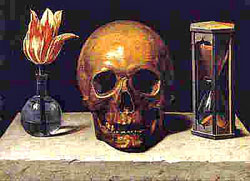 The cobra-like sculpture, with its inflated hood, watches over the compound in a protective posture, as if ready to strike. The cobra's head is twice the size of a human skull. It has a single eye, which is blue during daylight and red after nightfall, for inside the cobra's hood and behind its eye there is a closed-circuit camera that follows a visitor, invited or unwelcome, as the fountain rotates in the direction the intruder moves. The fountain-camera is controlled from a room within the villa where eight monitors, each with five stations, cover eight guest rooms, patio, pool, dining room, sitting room, and party room. Approximately ten cameras, including the one inside the cobra, have infrared lenses. All of the exterior cameras are camouflaged by the landscaping. The Villa's interior is magnificent. Every room has marble floors and is furnished with antiques. Observing the high ceilings, the finely crafted gold-leaf moldings, the portraits of Mussolini, Hitler, and Peron, the visitor experiences a feeling, a sort of living, breathing odor of danger and power that penetrates the soul and cell by cell contaminates the mind with fear. In the meeting room, twelve members of P-2, dressed in satin ceremonial robes and wearing black hoods reminiscent of those worn by members of the Ku Klux Klan, sit in leather chairs at a red marble conference table. They are the elite members of the Wolf Pack, Gelli's disciples - some say his execution squad. None of the black-clad disciples knows the identity of any of his eleven brothers. Grand Master Licio Gelli is the only one who bares his face. Two Masons stand post at the entrance to the meeting room. Their faces are also covered. They are Naja Hannah's personal bodyguards some say his death squad-former Mussolini Facists whose job is to protect the Grand Master and kill any of the twelve disciples who betray the cause "Il Momento di Passare all..." (The Time for Real Action)... Like Naja Hannah and his disciples, each bodyguard carries an axe; they also bear automatic weapons. The ceremony begins. There is an uneven series of knocks at the door.
The Grand Master strikes the table with one blow with his axe. Immediately the oversized door swings open and slams against the inner wall. Two guards escort the initiate to the center of the room where he faces the twelve Masons with his back to the grand masters throne. The Pagan, as he is called, is wearing a plain black hood and a blindfold. His identity is known to Grand Master Licio Gelli but to no one else. He is asked one question by each of the disciples, but the Pagan does not answer, instead, one of the guards speaks for him. Once all the ritual questions about purpose and belief and reason for wanting to become a member of Propaganda Due are answered, the Pagan is turned to face the Grand Master, who asks,
The initiate now answers for himself:
Then the blindfold is removed. It takes a moment for the initiate's vision to clear, because this is the first time since entering the compound that he has been allowed to see light. The blindfold serves a purpose other than security. It also represents the power of P-2:
Licio Gelli, Grand Master P2 Called Naja Hannah (King Cobra) by P2 members. Born 1919 in Pistoia, a provincial capital of Tuscany. At Seventeen he left high school to fight with the Fascist Italian Blackshirt division in Spain, and during World War II Gelli zealously supported the Italian dictator, Benito Mussolini.  Gelli served as an Officer in the notorious German SS Herman Goering Division which saw extensive duty in the battles of Sicily and Mainland Italy. When the dictator fell, Gelli fled to Argentina, where he allied himself with Juan Peron, became Peron's economic advisor to Italy, and was granted dual citizenship. Operated the "Rat Line" which orchestrated the escape of hundreds of indicted or suspected Nazi War Criminals, "Scientists", and Nazi Intelligence Officers including likely Klaus Barbie the Butcher of Lyon, Via Switzerland to South America under the direction of OSS/CIA, and M.I.5 using the code name "Operation Paperclip". With the help of the Grande Oriente of Italy the Anti-Fascist Commission cleared Gelli of War Crime charges related to his involvement with the executions of Partisans by the SS, contradicting claims by Masons of Anti-Masonry by Italian Fascists, and Anti-Fascism by Italian Masons. When Juan Peron died, Eva Peron called him back to organize the transition. In early 1960's he joined the Masonic Order of Freemasonry known in Italy as the Grande Oriente (recognized by mainstream Freemasonry UGLE & U.S. Grand Lodges). As Grand Master of P2 Gelli declared himself "a lifelong anti-communist". Secret Head of CIA and MI5 "Stay Behind" Underground Resistance Force Plan with the codename Operation "Gladio", who worked under the direct supervision of Freemason Dulles, who later became the CIA director fired by JFK. In the event of a takeover by Communists or anyone else the CIA, MI5 or Pentagon didn't like in Europe or Latin America, "Gladio" would wage a clandestine war of subversion and terrorism against the offending Government/Movement/People. This is likely what happened to Salvador Allende of Chile and the Socialist Government of Greece in the "Colonels Coupe". Under Gelli P2 Masonic Lodge was the most powerful, political, and violent secret organization in Italy. Important Italian Generals, magistrates, and businessmen became members of P2 Masonic Lodge which Gelli served from the hierarchy of Freemasonry. Determined to destroy Italy's parliamentary system of government in order to form a Presidential Dictatorship, Gelli recruited members who swore allegiance to him rather than to the nation of Italy. Gelli was not brilliant so much as shrewd and devious. He had money and power, but he realized that wealth and position meant little without the weapon of fear. Gelli believed that fear was the instrument by which real power could be masterfully employed, and he believed fear was most useful when cloaked in silence. So Grand Master Gelli divided members of P2 Masonic Lodge into divisions and forbade them to disclose their membership. In 1980 Gelli was the Guest of Honour at one of Ronald Reagan's Presidential Inauguration Balls. It has been suggested that Gelli worked closely with Reagan CIA Director Appointee William Casey in the "October Surprise" involving the delayed release of U.S. hostages held by the Ayatollah Khomeini until after the elections, which contributed greatly to Jimmy Carters defeat. Ronald Reagan received an "honorary" 33rd Scottish Rite Freemason Degree after he was elected President. Michele Sindona Pope Paul VI's banker and confident. This was part of an elaborate scheme by the Mafia, the CIA, MI-5, Neo Fascist Groups, and the defacto controlling body of all Italian Freemasonry - P2 (which was called by Italy's Interior Minister a State within a State) to subvert, bankrupt, and destroy the Vatican and the Parliamentary System and replace it with a "Presidential" system (i.e. a Dictatorship). 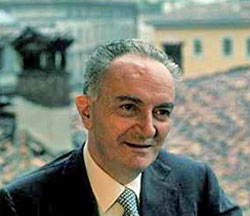 Born in 1920 in Patti, Sicily. Sindona became the most successful tax lawyer and the most powerful banker in Italy. Years later, as one of the wealthiest men in the world, Sindona was identified by the Italian and U.S. governments as the Mafia's banker (appointed as such at a International Mafia conclave in Palermo Sicily in 1957). He was accused of washing heroin profits through his banks and of smuggling currency out of Italy through the Bank of the Vatican and help organize with P2 Grand Master Gelli and the CIA/MI5 the coup in Greece in '69, an attempted coup in Italy plus others in Spain and Latin America). In 1972 Sindona purchased controlling interest of Franklin National Bank. Two years later Franklin Bank collapsed, the largest bank failure in American history. On August 2, 1979, while under indictment,Michele Sindona disappeared and was believed to have been kidnapped by left-wing terrorists (subsequently proved to be a staged kidnapping by Sindona and the Mafia to avoid trial). He reappeared on October 16, 1979, was later convicted of bank fraud, and was sentenced to twenty five years in prison. P2 Masonic Lodge Member. Roberto Calvi, Banco Ambrosiano President Member Masonic Lodge P2. Received millions of dollars from CIA and British Intelligence which he laundered to P2 for support of various right wing activities and coups throughout Southern Europe and Latin America. 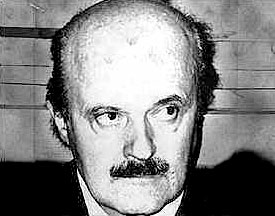 Calvi's secretary "falls" to her death from 4th floor window of Banks International Headquarters and then the next day Calvi is found hanging from Black Friars bridge in London with a false passport and twelve pounds of bricks and rocks shoved in his pockets (i.e. masonry). Flavio Carboni and Roberto Calvi's Flight The Life & Death of Roberto Calvi Rupert Cornwell Rome Correspondant The Financial Post Victor Golancz Ltd, 1983 Flavio Carboni is perhaps the key figure in the final stages of Calvi's life. From January 1982 onwards, he would with with increasing frequency visit Calvi in Milan, or for weekend consultations at Drezzo. The small Sardinian, who once boasted to his family he would become the richest man in Italy, would be companion and paid counselor to the chairman of Ambrosiano, right up to the end. Vaunting contacts among the Roman politicians, the press and the highest echelons of Italian Freemasonry, Carboni took over the role that Gelli had once assumed for Calvi - and more besides. 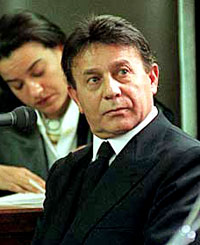 For Carboni was not only on good terms with Armando Corona, who in March 1982 was to become the head of the Italian Grand Orient. He could also enlist the services of such as Ernesto Diotallevi andDanilo Abbruciati, notorious bosses of the Rome underworld. Magistrates would later charge that Carboni's building and property businesses were used to recycle the proceeds of organized crime and maybe right-wing terrorism also. In most of the subsequent discoveries which seemed to link Calvi's Ambrosiano with common crime, the name of Carboni would be a constant thread. Calvi was attracted to Carboni, as he was to Pazienza, by his promised access to hidden and therefore real power. Precisely to what extent his helpers were in collusion it is hard to establish. But Calvi feared Carboni, just as he was afraid of Pazienza with his vaguely threatening braggadocio, and well-advertised secret service connections. Reading of The Godfather was not only instructive of the advantages of hidden power, but also of the fate which might befall those who offended it. Calvi was by this stage scared not only for his own safety (his retinues of bullet-proof Alfa Romeos and bodyguards were costing his bank four million lire every day) but for that of his family as well. From February on, he was imploring his wife to leave Italy for somewhere less dangerous. In May, and with some reluctance, she finally yielded to his urgings and went to join their son Carlo in Washington. And with good reason, for the violent undertows gripping Ambrosiano's affairs had broken dramatically to the surface. Roberto Rosone The Life & Death of Roberto Calvi Rupert Cornwell Rome Correspondant The Financial Post Victor Golancz Ltd, 1983 Despite his lofty rank of general manager and deputy chairman of Banco Ambrosiano, had lived for many years in a modest first-floor flat in a corner block of Via Olofredi, close to the central station in Milan. On the ground floor of the same building was the branch office No. 18 of Ambrosiano in Milan. It was protected round the clock by armed private guards, as indeed are bank premises up and down Italy, as a matter of routine. 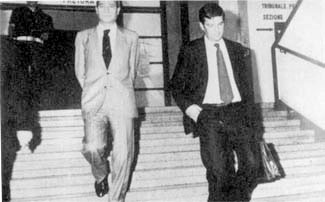 On the morning of April 27, 1982 Rosone left as usual for his office shortly after 8 a.m. Suddenly, as he turned into the street, a man with a pistol stepped forward and fired wounding him in the legs. But the guards had quickly noticed the danger and shot back, killing the assailant outright. To their great surprise police identified the corpse as that of no ordinary Milanese delinquent, but the important Rome gangland figure Abbruciati. Abbrucati's links with Carboni, and indeed Carboni's intimate dealings with Calvi, were not yet public knowledge. Even so, the episode raised more questions than it answered, casting a yet more sinister shadow over Ambrosiano.
Later, after Calvi and Ambrosiano had perished, as still darker possibility emerged - that Calvi himself, through Carboni and Abbruciati, was directly or indirectly responsible for the attack on his own vice-chairman, suspected of plotting against him. What is certain is that Carboni was already receiving money from Calvi. In Italy, Ambrosiano lent large sums to companies owned by Carboni, and Calvi even provided finance to help the campaign of Corona to become the new head of Italian Freemasonry. Timeline
Albino Luciano, Pope John Paul I David Yallop Bantam Books, 1984
A List of Masons in the Vatican and Italian Church? 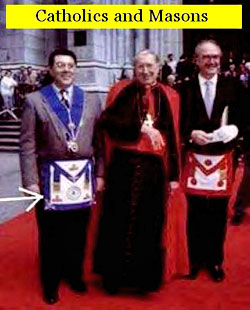 The following is a list of Masons reprinted with some updates from the Bulletin de l'Occident Chrétien Nr.12, July, 1976, (Directeur Pierre Fautrad a Fye - 72490 Bourg Le Roi.) The following is a list of Masons reprinted with some updates from the Bulletin de l'Occident Chrétien Nr.12, July, 1976, (Directeur Pierre Fautrad a Fye - 72490 Bourg Le Roi.)All of the men on this list, if they in fact be Masons, are excommunicated by Canon Law 2338. Each man's name is followed by his position, if known; the date he was initiated into Masonry, his code #; and his code name, if known:
THE FOLLOWING CLERGY WERE EXPOSED AFTER THE ABOVE LIST WAS COMPILED:
Events Foretold? "I Saw Satans' Smoke Entering the Vatican" Anne Catherine Emmerich (1774-1824), a German Augustinian nun, stigmatist (bore the wounds of Christ), and miracle- 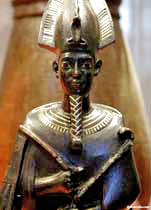 worker, who subsisted entirely on water and Holy Communion for many years, received numerous visions of the future crisis in the Church and the infiltration of the Masons. worker, who subsisted entirely on water and Holy Communion for many years, received numerous visions of the future crisis in the Church and the infiltration of the Masons.In her visions, she describes men in aprons destroying the Church with a trowel, The Masons wear aprons and their symbol is the Mason's trowel. The following excerpts are from page 565 of Life of Anne Catherine Emmerich, Vol. 1, by Rev. K.E. Schmöger, Tan Books, 1976:
Video The Vaticans Banker |
The Justice of God: Vicomte Léon de Poncins - Freemasonry and the Vatican




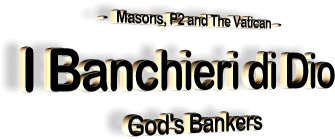

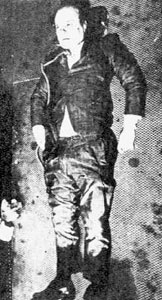
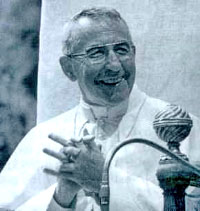
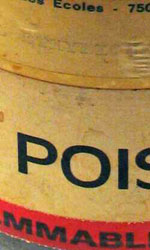
No comments:
Post a Comment